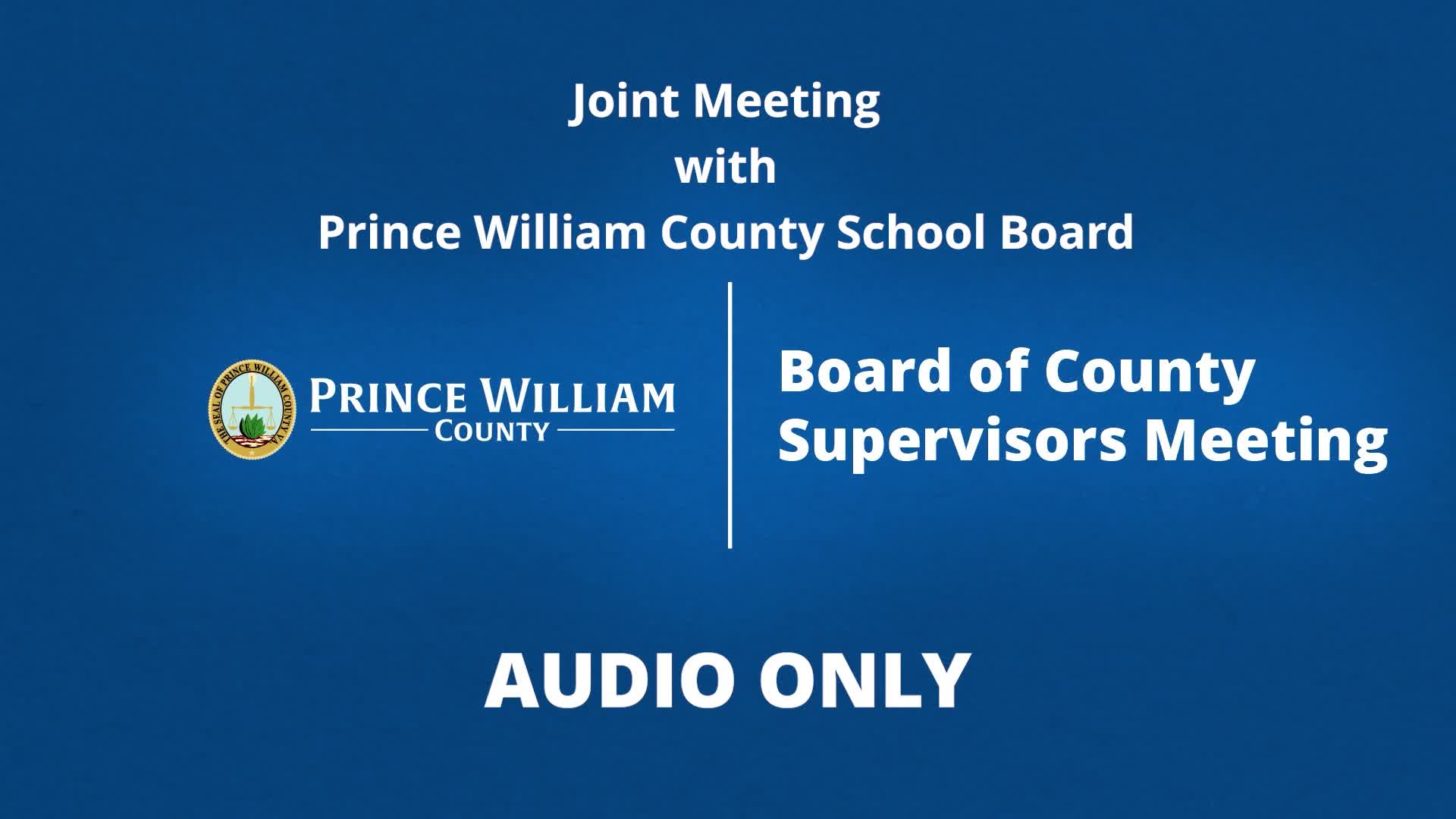Prince William schools project 3,700‑student decline over five years; redistricting and trailer use debated
October 09, 2025 | Prince William County, Virginia
This article was created by AI summarizing key points discussed. AI makes mistakes, so for full details and context, please refer to the video of the full meeting. Please report any errors so we can fix them. Report an error »

Prince William County Schools staff told a joint session of supervisors and school board members Wednesday that the district expects about 3,700 fewer students over the next five years and that elementary‑level cohorts are smaller because of declining birth rates.
"Our projection error was 3 tenths of a percent this year," said Dr. Matt Karpich, supervisor of planning and the capital improvement program, describing the district’s redesigned enrollment model. He said the district’s model blends birth data, migration and planned housing development; the presentation showed the elementary cohorts are substantially smaller than older grade levels and that net domestic out‑migration contributes to the decline.
Karpich said staff reconciles development records with county planning data and uses those construction pipelines to estimate student yields from new housing. He said the district projected about 1,140 new housing units last September but actual building permits and records show roughly 1,500 new units this year; staff will incorporate those actuals into the next baseline.
Why it matters: supervisors and the school board said pockets of the county will still experience overcrowding and require short‑term responses, while other schools serve smaller cohorts and have underutilized capacity. Several school board members and supervisors reiterated that redistricting decisions can be politically difficult but noted redistricting and program‑level moves (for example, adding specialized programs that attract students) are tools the division is using to rebalance capacity.
Board members asked about trailer usage and timing. School officials said trailers are still used in pockets of overcrowding while trailers have been removed in other locations where enrollment has fallen: "we are also are subtracting trailers in certain pockets of the county," Dr. Karpich said. Officials said the division updates utilization and trailer counts annually as part of the five‑year capital improvement program.
Supervisors and school board members discussed long‑term strategies including program placement, partnerships, and the possibility of more frequent joint meetings to coordinate land use, transportation and school planning. There were no votes or budget approvals tied to the presentation; members agreed to continue collaborative planning and to share planning language and materials between the two bodies.
"Our projection error was 3 tenths of a percent this year," said Dr. Matt Karpich, supervisor of planning and the capital improvement program, describing the district’s redesigned enrollment model. He said the district’s model blends birth data, migration and planned housing development; the presentation showed the elementary cohorts are substantially smaller than older grade levels and that net domestic out‑migration contributes to the decline.
Karpich said staff reconciles development records with county planning data and uses those construction pipelines to estimate student yields from new housing. He said the district projected about 1,140 new housing units last September but actual building permits and records show roughly 1,500 new units this year; staff will incorporate those actuals into the next baseline.
Why it matters: supervisors and the school board said pockets of the county will still experience overcrowding and require short‑term responses, while other schools serve smaller cohorts and have underutilized capacity. Several school board members and supervisors reiterated that redistricting decisions can be politically difficult but noted redistricting and program‑level moves (for example, adding specialized programs that attract students) are tools the division is using to rebalance capacity.
Board members asked about trailer usage and timing. School officials said trailers are still used in pockets of overcrowding while trailers have been removed in other locations where enrollment has fallen: "we are also are subtracting trailers in certain pockets of the county," Dr. Karpich said. Officials said the division updates utilization and trailer counts annually as part of the five‑year capital improvement program.
Supervisors and school board members discussed long‑term strategies including program placement, partnerships, and the possibility of more frequent joint meetings to coordinate land use, transportation and school planning. There were no votes or budget approvals tied to the presentation; members agreed to continue collaborative planning and to share planning language and materials between the two bodies.
View the Full Meeting & All Its Details
This article offers just a summary. Unlock complete video, transcripts, and insights as a Founder Member.
✓
Watch full, unedited meeting videos
✓
Search every word spoken in unlimited transcripts
✓
AI summaries & real-time alerts (all government levels)
✓
Permanent access to expanding government content
30-day money-back guarantee

